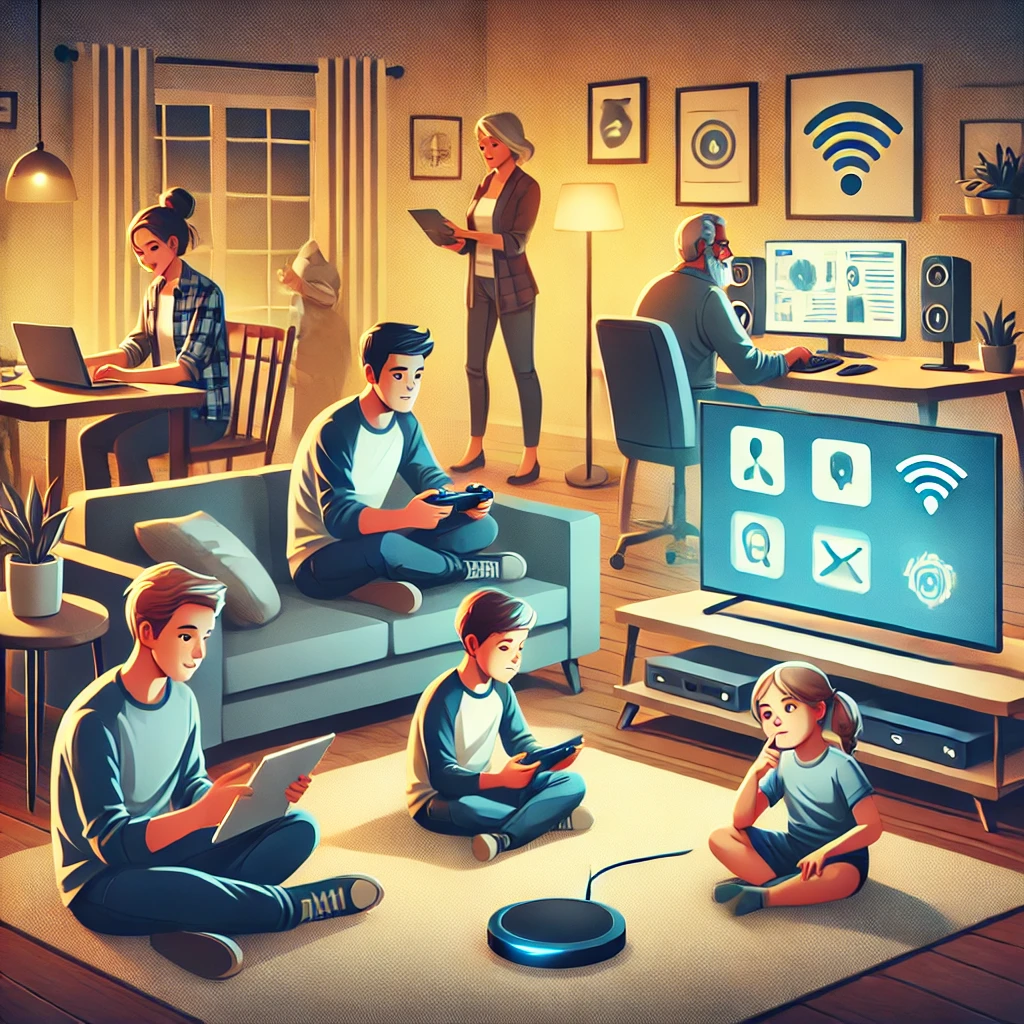In today’s world, technology plays a crucial role in shaping how families connect and operate. From mobile devices and social platforms to smart home gadgets and remote working, these advancements have significantly altered family interactions. While offering great convenience and connectivity, they also bring distinct challenges. Let’s delve into how technology is transforming family life in the digital era.
1. Enhanced Communication and Connectivity
Technology has revolutionized family communication methods. Tools like WhatsApp, FaceTime, and Zoom help families stay in touch, no matter the distance. For example:
- Virtual Family Gatherings: Video calls allow families across different regions to celebrate special occasions together.
- Real-Time Updates: Social media and messaging apps provide immediate updates, keeping everyone informed about each other’s activities.
Nonetheless, constant online communication can sometimes reduce in-person interactions at home.
2. Changing Parenting Practices
Technology has brought new aids for parenting:
- Digital Learning Tools: Apps like Khan Academy and Duolingo help parents support their children’s education.
- Parental Control Apps: These apps enable parents to regulate their children’s screen time and online habits, ensuring safety.
However, frequent technology use can lead to debates about screen time, as parents try to balance educational benefits with the risks of overuse.
3. Influence on Family Entertainment
Gone are the days of a single TV gathering:
- Streaming Services: Platforms such as Netflix and Disney+ offer personalized viewing, which sometimes leads to less shared viewing experiences.
- Gaming: Online multiplayer games can be a bonding activity but may also cause isolation from family interactions.
While technology provides diverse entertainment options, it can also reduce shared family moments as everyone uses their own devices.
4. Work-from-Home and Family Roles
Remote work, enabled by technology, has blurred the lines between professional and home life:
- Flexible Schedules: Parents working from home can spend more time with their kids, enhancing family bonds.
- Role Shifts: Technology allows both parents to contribute financially while managing household duties.
However, remote work can sometimes lead to stress, impacting the quality of family time as work demands intrude on home life.
5. Smart Homes and Automation
Smart home technology is changing daily routines:
- Convenience: Devices like Alexa, Google Home, and smart thermostats make managing chores easier.
- Safety: Smart security systems and baby monitors provide parents with peace of mind.
Yet, relying too much on automation might disconnect families from traditional household management.
6. Impact on Relationships
Technology has altered family interactions:
- Strengthened Bonds: Families can share experiences via social media, group chats, and online activities.
- Challenges: Excessive use of technology, like constant smartphone use, can cause distractions and lower the quality of face-to-face interactions.
Balancing screen time with meaningful connections is essential for healthy family relationships.
Conclusion
Technology has undeniably transformed family dynamics in the 21st century. While it offers numerous advantages, it also presents challenges that families must navigate to maintain strong, healthy relationships.
Navigating Generational Gaps
Technology can sometimes widen the gap between different generations within a family:
- Tech-Savvy Youth: Younger members often pick up new tech quickly, while older folks might find it harder to adapt.
- Digital Bridging: Helping grandparents learn to use smartphones or social media can strengthen bonds across generations.
However, differences in tech skills can also lead to misunderstandings and frustration.
Education and Family Involvement
The COVID-19 pandemic’s shift to online learning highlighted technology’s role in education. Families had to:
- Adapt Quickly: Parents became more hands-on with their children’s schooling, helping with virtual lessons and homework.
- Face Challenges: Limited access to tech underscored inequities in educational opportunities, bringing the digital divide into focus.
This experience has led families to rethink their dependence on technology for education and consider its long-term effects.
Technology and Mental Health
Technology impacts family life in many ways, including mental health:
- Positive Effects: Virtual therapy and mental health apps can support family members.
- Negative Effects: Excessive tech use might cause feelings of loneliness, anxiety, and depression, impacting family harmony.
Promoting digital wellness is vital to address these issues.
Conclusion: Striking a Balance
In the 21st century, technology is a double-edged sword for families. It offers great convenience and connectivity but also presents challenges that need careful management. Families should aim to balance tech use by encouraging open communication, setting limits, and valuing in-person interactions.
By leveraging the advantages of technology while minimizing its downsides, families can foster stronger, healthier relationships in today’s digital world.
